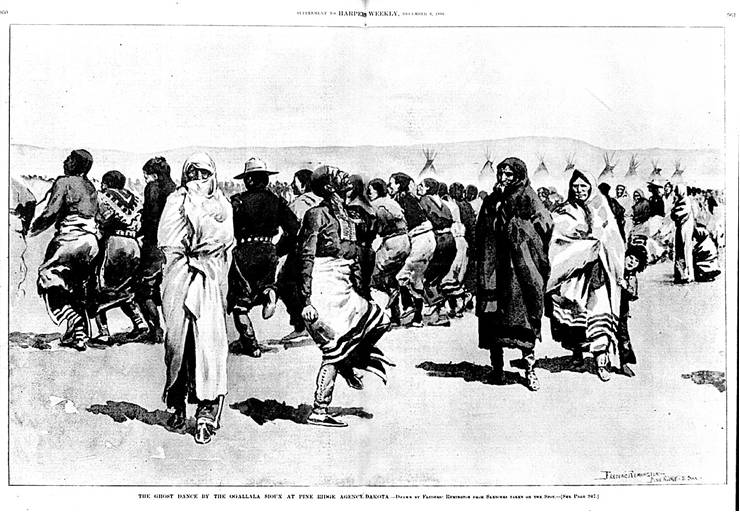Ghost Dance - Religious and Spiritual Dance
Since the dawn of modern history, dancing has always been in close contact with religious movements. This tight bond was nowhere as close as it was during the years when numerous American Indian tribes started practicing the religious “Ghost Dance” routine, originally used as a religious and spiritual dance that was supposed to signify the prophecy of end of the suffering of Native American folk, the end of the domination of the white settlers from Europe and restoration of the world to the natural state. The height of the popularity of Ghost Dance happened during the last years of 19th century during which the plight of Native American tribes reached its height with numerous European diseases decimated the tenth of their entire population, devastation of buffalo herds damaged their ability to gather food and aggressive expansion of European settlers caused military conflict that forced many tribes to leave their homelands. After the initial popularity of Ghost Dance which has spread to all corners of North America by early 1900s, many cultures morphed the Ghost Dance into their version, synthesizing the aspects of the dance and its ritual into their beliefs.
While the tradition of “circle dancing” was present in the Native American people since prehistoric times, its modern version of “Ghost Dancing” happened in two waves – first by the prophet and dreamer Hawthorne Wodziwob in 1871-1873 who promoted vision of the better world for Native tribes and then several years later by Wodziwob pupil Wovoka (born as Jack Wilson) who promoted much more radical vision of the future.

First examples of Ghost Dance that were organized by famous healer Hawthorne Wodziwob were centered on his visions, in which he spoke of the promises made to him by the souls of the dead (which even included promise that some of them will return to the life for the people of three to four years) and the ways the deceased travel to the land of the dead. These ritual dances and sharing of visions were quickly accepted by Wodziwobs peers, and the new tradition of organized “circle dances” started spreading across North American tribes. During the height of the popularity of this type of religious dance, Wodziwob had help from local “weather doctor" named Tavibo who was the father of the Jack Wilson, a pupil of Wodziwob that would become even more famous prophet Wovoka.
Jack Wilson's prophetic visions covered everything from weather forecasts to the healing, promotion of universal love to the visions of death world. His most important message that he tried to pass to the tribes of Native American people that were stricken by constant warfare, spreading plagues and the disappearance of nomadic lifestyle was the vision of perfect peace. This peace and renewal of natural resources, love and faith, would be achieved only on the day when every Indian in the West danced his dance, with all evil being washed away. Initially accepted under the name “Dance In A Circle”, many other tribes started dancing it and calling it under names Spirit Dance and Ghost Dance. Many western tribes of Indians sent representatives to inspect personally message and life of Wovoka, which caused quick spreading of Ghost Dance across much of West.
